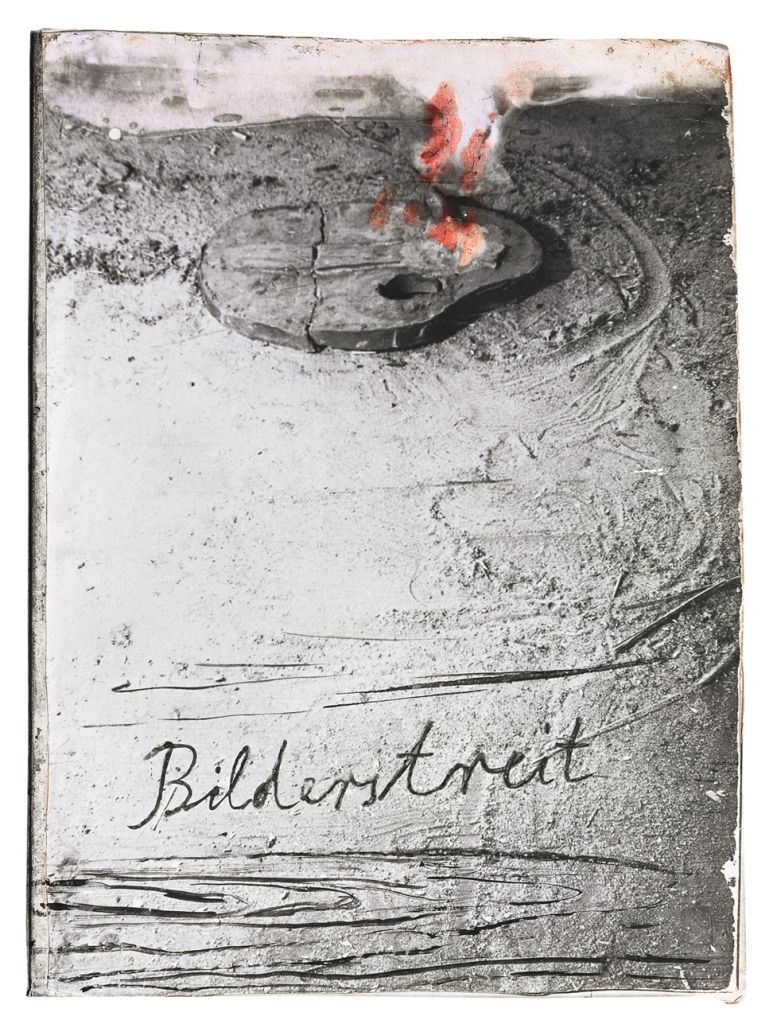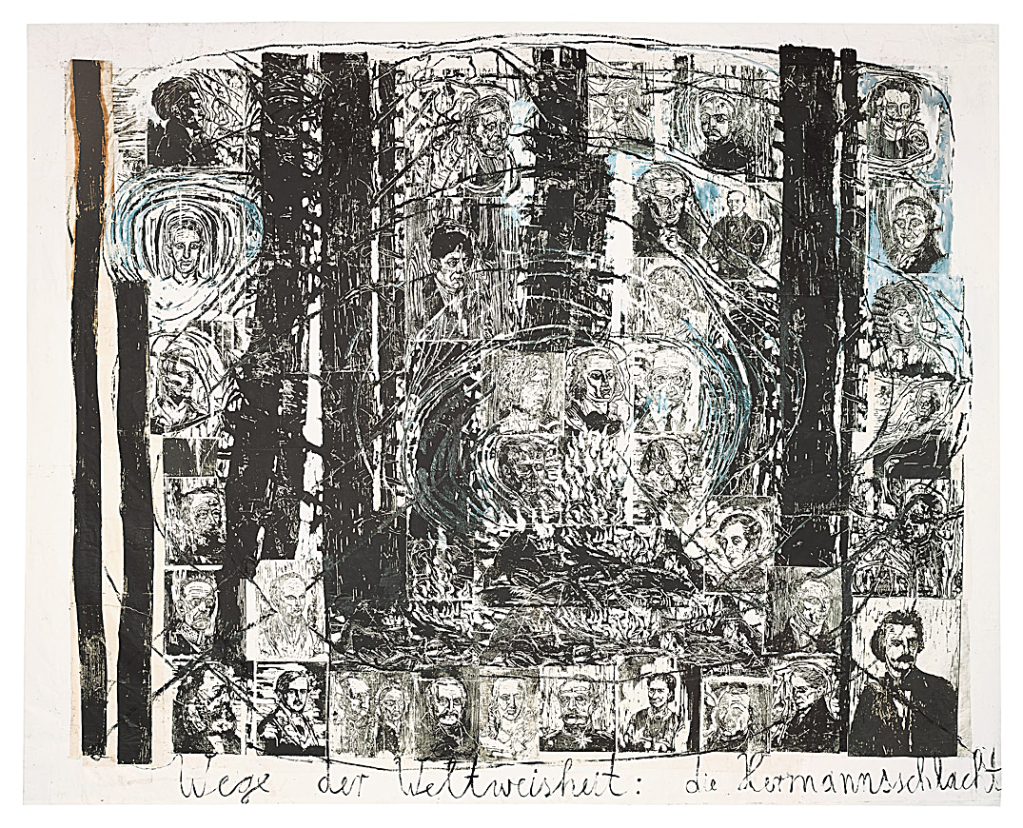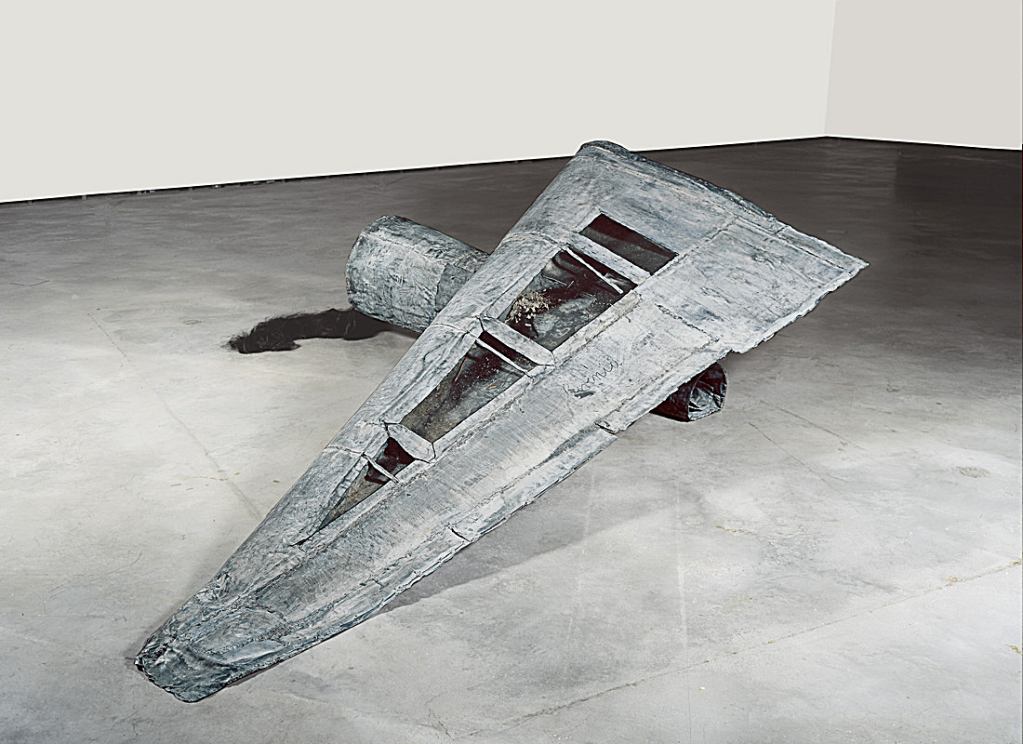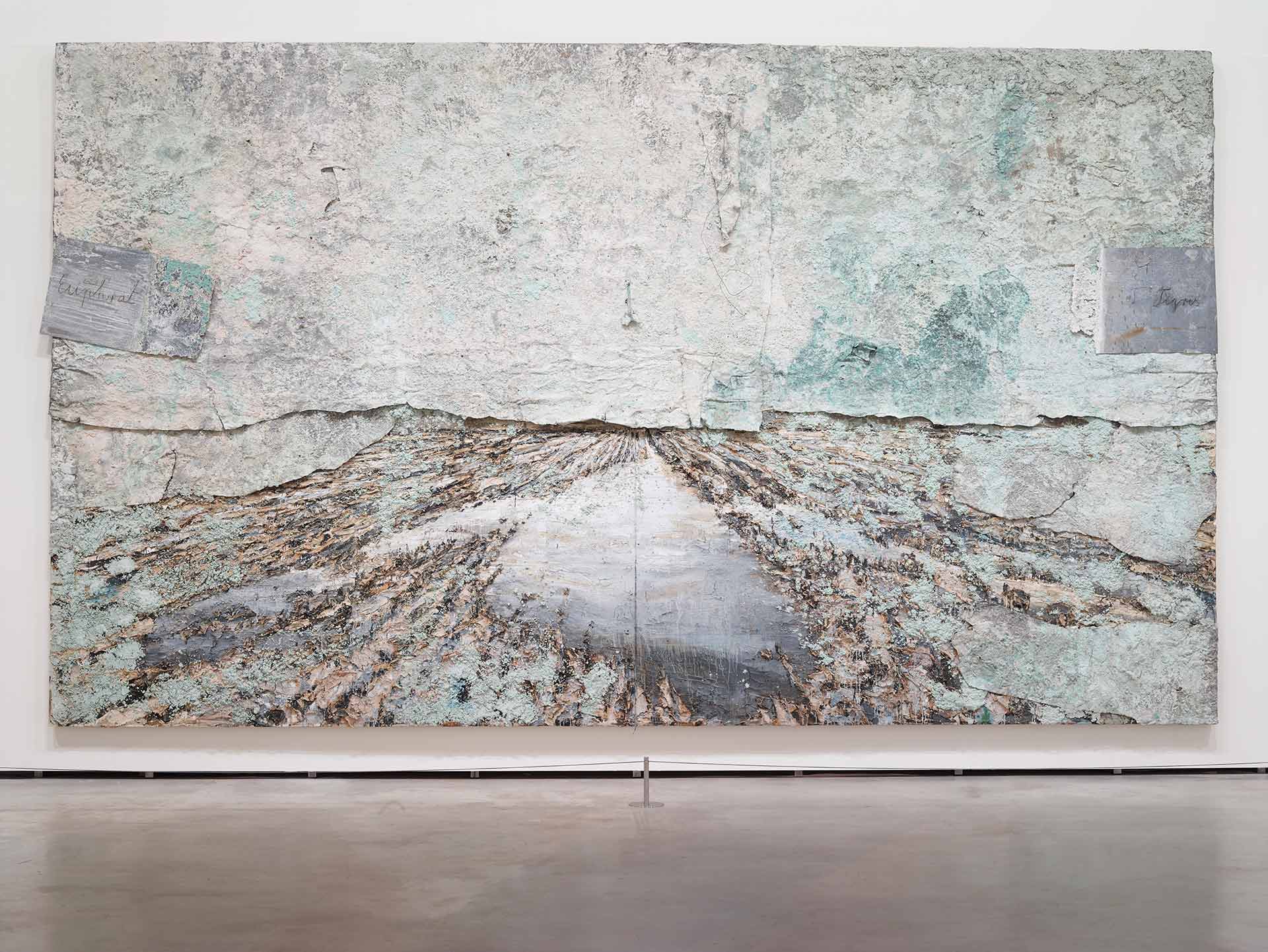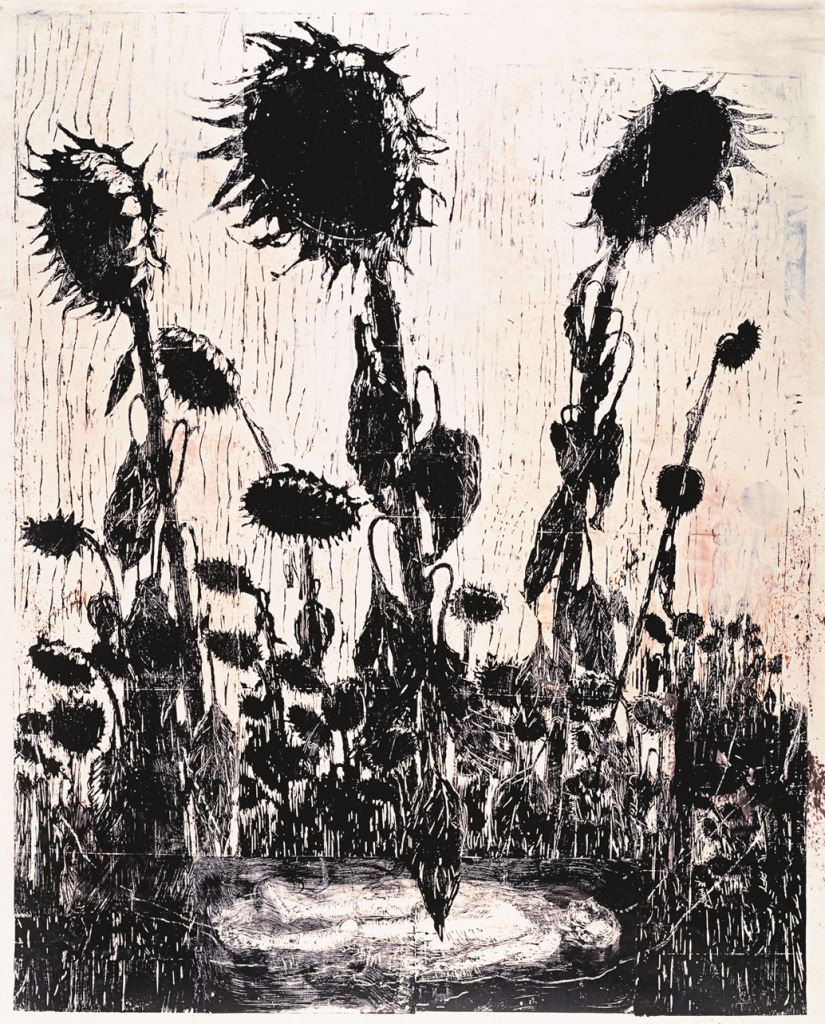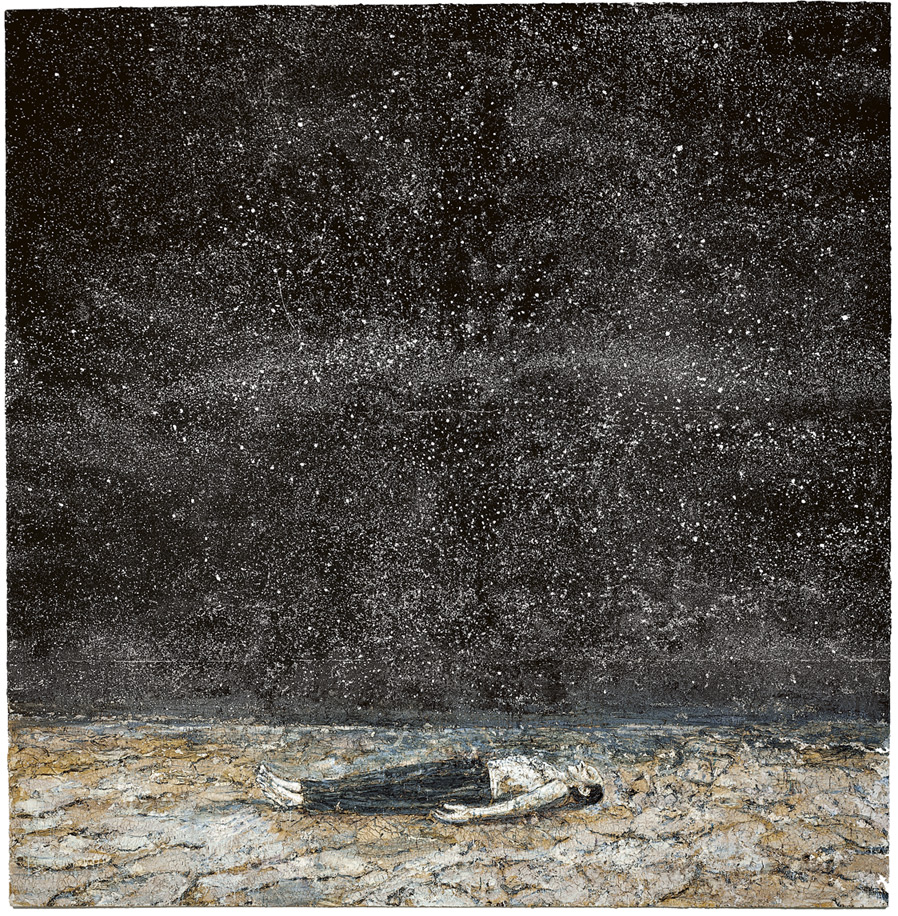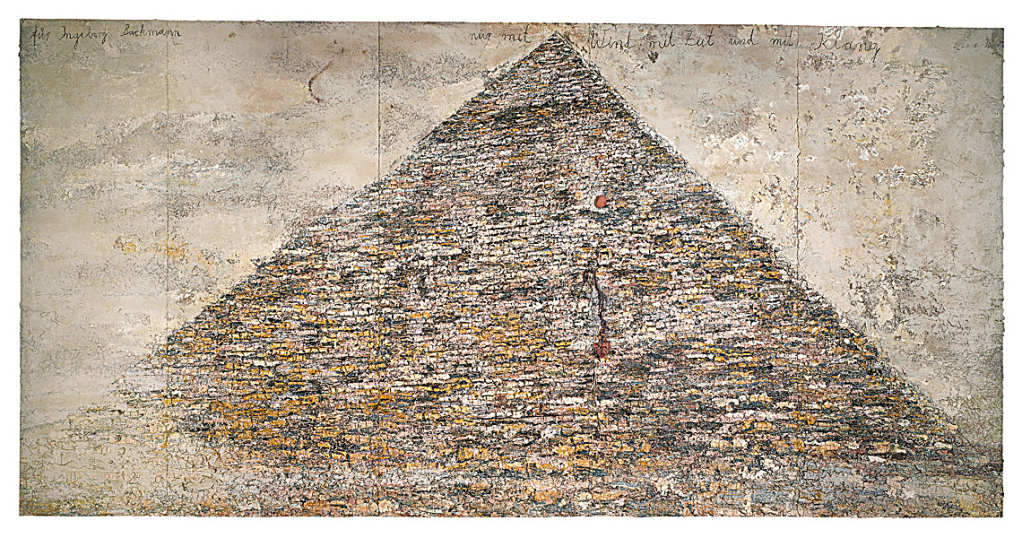For Robert Fludd
1995-96Acrylic, emulsion, and sunflower seeds on woodcut mounted on photo-collage105 x 82.5 x 105 cm, 16 spreads
Born in Germany just months before the final European battle of World War II, Anselm Kiefer grew up witnessing the results of modern warfare and the division of his homeland. He also experienced the rebuilding of a fragmented nation and its struggle for renewal. Kiefer dedicated himself to investigating the interwoven patterns of German mythology and history and the way they contributed to the rise of Fascism. He confronted these issues by violating aesthetic taboos and resurrecting sublimated icons. In one of his earliest projects, his 1969 Occupations (Besetzungen) series, Kiefer photographed himself mimicking the Nazi salute at various sites during a journey through Switzerland, France, and Italy. Subsequent paintings—immense landscapes and architectural interiors, often encrusted with sand and straw—invoke Germany's literary and political heritage; references abound to the Nibelung legends and Richard Wagner, Albert Speer's architecture, and Adolf Hitler. Beginning in the mid-1980s, and especially following his move to southern France in the early 1990s, Kiefer's iconography expanded to encompass more universal themes of civilization, culture, and spirituality, drawing upon such sources as the Kabbalah, alchemy, and ancient myth.
Artist's books have been one of Kiefer's central means of expression since 1968. Unlike many artist's books, which are typically issued as multiples, Kiefer's books are singular, handmade pieces and, in this sense, more like paintings or sculptures. For Robert Fludd (Für Robert Fludd, 1995–96) is dedicated to the eponymous English metaphysical philosopher and alchemist (1574–1637), for whom the essence of each and every one of the universe's elements could be found in mankind, a notion that established a cosmological order between different spheres of the universe. Fludd was also renowned for his understanding of how to convey his philosophical and cosmological ideas graphically, with the help of the best printmakers of his day.
Kiefer began to make books and paintings with underlying themes devoted to Fludd in the early 1990s. This particular book contains a series of photographs illustrating the process of growth in a sunflower field. For Kiefer, sunflowers offer an optimal analogy for Fludd's thinking about the relationship between the microcosm and the macrocosm. (The symbol also appears in the Guggenheim Bilbao Museum's Sunflowers [Tournesols, 1996].) The book's cover features a black-and-white photograph of a sunflower. Inside, photographs chart sunflowers growing, ripening, and losing their seeds, which Kiefer represents with real sunflower seeds collaged on the pages. The sunflowers ultimately shrivel and disappear, until only the seeds are left. In the subsequent sheet, the scattered seeds are replaced by an image of a starry sky.
Source(s):
Nancy Spector. "Anselm Kiefer." In Spector, ed. Guggenheim Museum Collection: A to Z. 3rd rev. ed. New York: Guggenheim Museum, 2009.
Miguel López-Remiro. "Anselm Kiefer." In Guggenheim Museum Bilbao Collection. Bilbao: Guggenheim Museum Bilbao; Madrid: TF Editores, 2009.
"Anselm Kiefer." In The Permanent Collections of the Guggenheim Museums. Bilbao: Guggenheim Museum Bilbao, 2007.
Original title
Für Robert Fludd
Date
1995-96
Medium/Materials
Acrylic, emulsion, and sunflower seeds on woodcut mounted on photo-collage
Dimensions
105 x 82.5 x 105 cm, 16 spreads
Credit line
Guggenheim Bilbao Museoa

